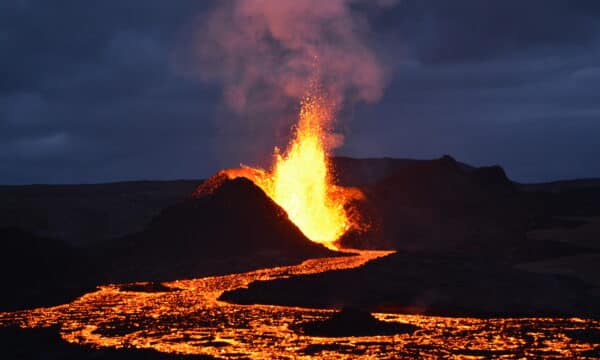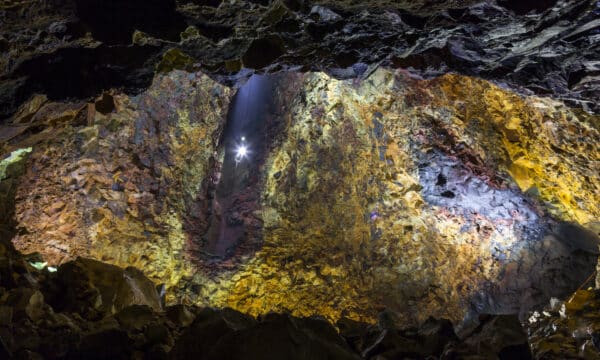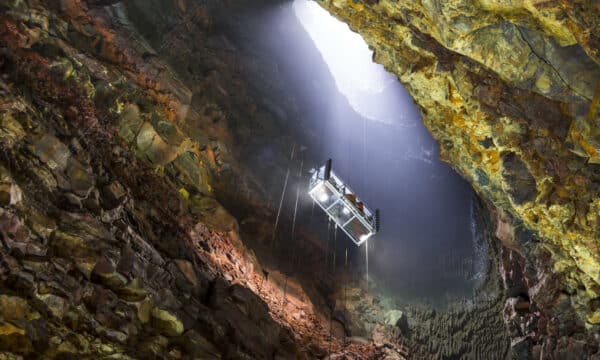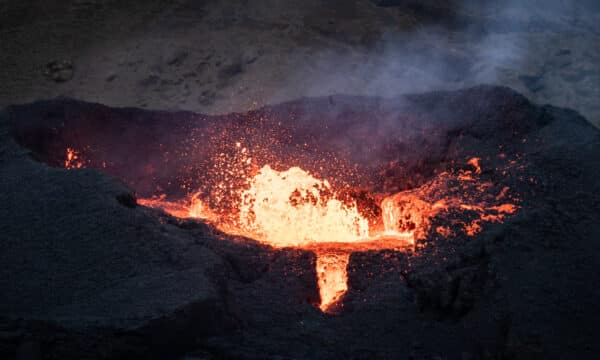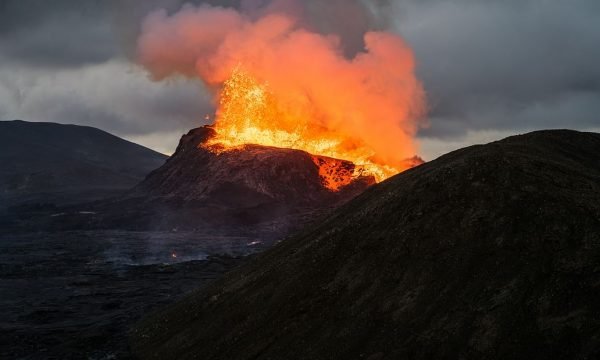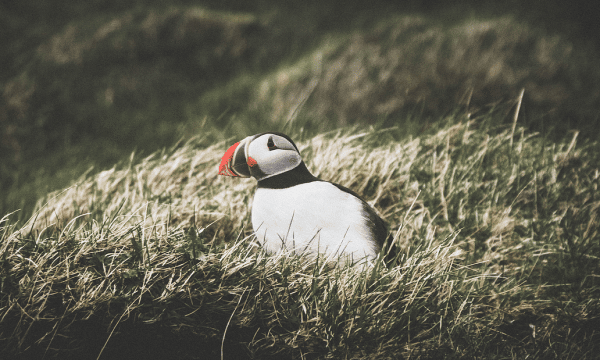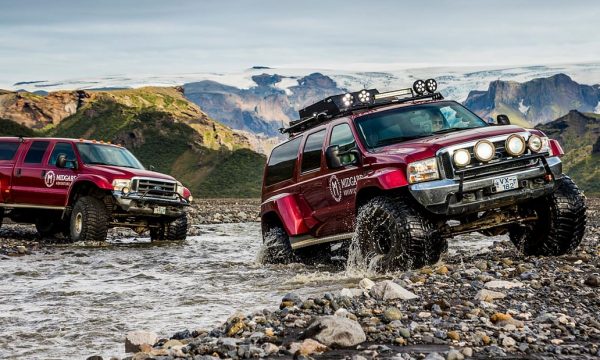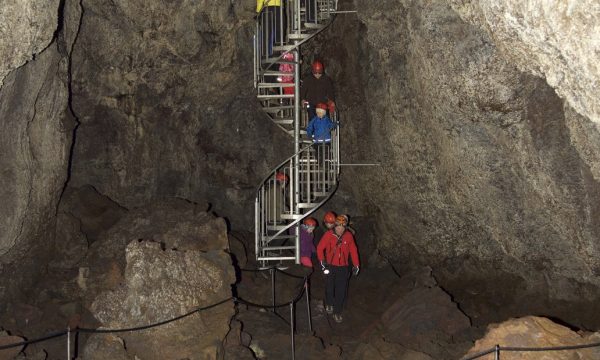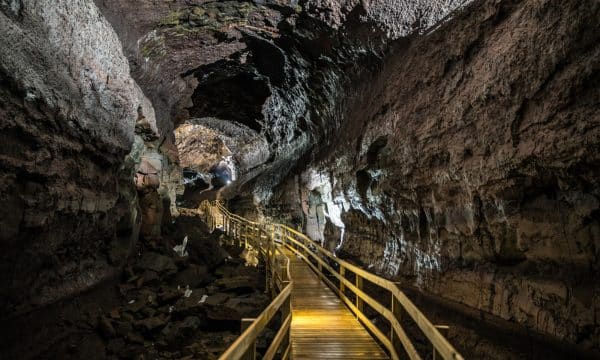Volcano Tours
Learn about glowing red magma or explore the aftermath of an eruption with a Volcano Tour in Iceland. Here you can explore the wonders of famous features such as Fagradalsfjall Volcano, Eyjafjallajökull Glacier, Lake Mývatn, and more. Check out our selections of volcano tours below.
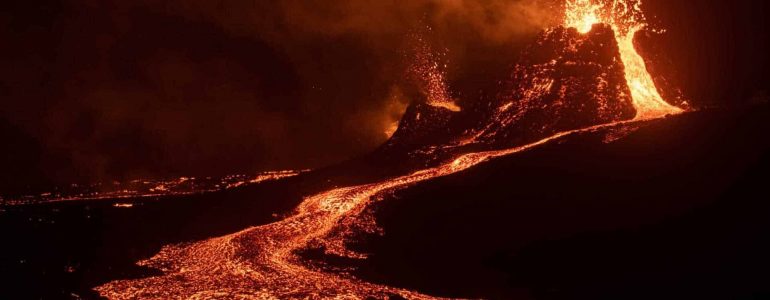
About Volcano Tours in Iceland
Iceland is one of the most volcanically active countries in the world. On a Volcano Tour, you’ll visit one of Iceland’s many volcanoes to learn all about the powers lurking underneath the Earth’s surface.
Volcano Tours include excursions to lava caves and fields, geothermal regions, glacier-covered volcanoes, and — if the timing is right — an erupting volcano.
What’s Included in a Volcano Tour
Included in a Volcano Tour is all safety equipment needed for the trip, whether you are visiting a lava cave, glacier, or an active volcano. Also included is an English-speaking guide who will share his knowledge of the geology and history of the region.
Occasionally on long tours, guests are provided with a small snack. If a snack is included it will be listed in the “Included” section of the tour. You can always bring a packed lunch if you are unsure. If transfer to and from Reykjavík is included, it will also be listed in that section.
What to Wear on a Volcano Tour
When visiting a volcano in Iceland, be it active or dormant, always wear warm and waterproof clothes. If a long hike is needed to get to the volcano, make sure your clothes are also wind resistant. Bring a hat, scarf, and gloves or mittens.
Good hiking boots are also essential, especially if you plan on visiting the volcano in Geldingadalur Valley. Preferably, your shoes should cover your ankle. That way, the crampons can fit on better.
The boots will also come in handy if you plan on visiting a lava cave or a dormant volcano, as it is often wet and slippery underground. Your shoes will undoubtedly be useful on other occasions during your holiday. They are, for example, essential for Glacier Activities such as Ice Caving and Glacier Hiking.
Frequently asked questions
Yes. Iceland has about 130 volcanoes, both active and dormant. It also has around 32 active volcanic systems. An active volcano doesn’t necessarily mean that it is erupting. It just means that it has the potential to erupt. Scientists monitor each volcano in Iceland closely, paying particular attention to any seismic activity found near them. You can read more about volcanoes in Iceland here. Currently, there is an erupting volcano in Iceland on the Reykjanes Peninsula.
If a volcano erupts, the best way to see it is with a Guided Volcano Tour. Either a flightseeing tour or on foot. You can read more about visiting active volcanoes here.
Iceland is located on the Mid-Atlantic Ridge, a mostly underwater mountain range. This ridge is a meeting point for two tectonic plates (You can see the boundary between them at Þingvellir National Park). When these plates move, magma from the Earth’s mantle rises to the surface, sometimes in the form of a volcanic eruption. Furthermore, Iceland is also located on what scientists call a ‘hot spot’, a location where magma is very close to the surface.
Scientists monitor all active volcanoes in Iceland, especially those that are erupting. They measure seismic activity, volcanic gases, and lava flow. When all of these start to decrease, the volcano is likely about to stop erupting. At a point, there will be no signs of an active magma chamber beneath the volcano. When the magma chamber has been empty for a long time (thousands of years), you can even visit inside that volcano. Kerið Crater Lake is considered to be a former volcano that collapsed after its magma chamber was depleted.
Scientists in Iceland monitor all volcanoes here. They measure seismic activity, such as the frequency and intensity of earthquakes. They also look at the swelling of the ground, changes in heat, and an increase in the volcano’s gases. Suppose a volcano begins to show signs of eruption. In that case, scientists will warn all those nearby, asking them to stay away from the area. Note that volcanoes can show some of these signs without actually erupting.
It is hard to say how long a volcanic eruption will last. Some only last a few days, while others can go on for years.
The most active volcano in Iceland is Mt. Hekla. Its first recorded eruption was in 1104, and since then, it has erupted 18 times; the last time was in 2000. Other active volcanoes are Grímsvötn, Katla, Askja, and Krafla. Hekla and Grímsvötn have both been showing signs of unrest recently, so we might see an eruption there soon. Both volcanoes are too far away from human habitation to cause any alarm. Surprisingly, the infamous Eyjafjallajökull volcano (which stopped air traffic a decade ago) and Fagradalsfjall (which is currently erupting) are not one of the most active volcanoes in Iceland.

